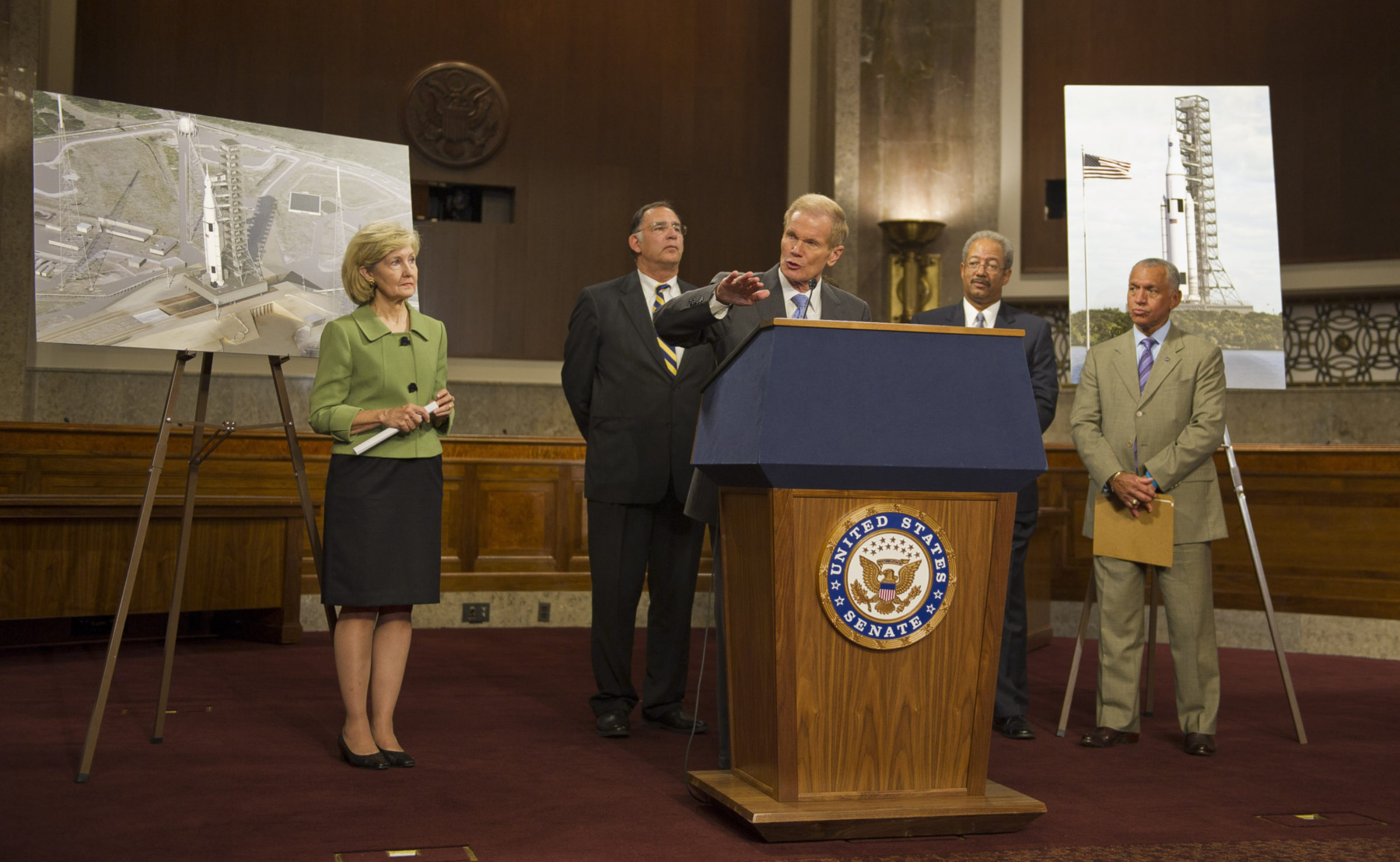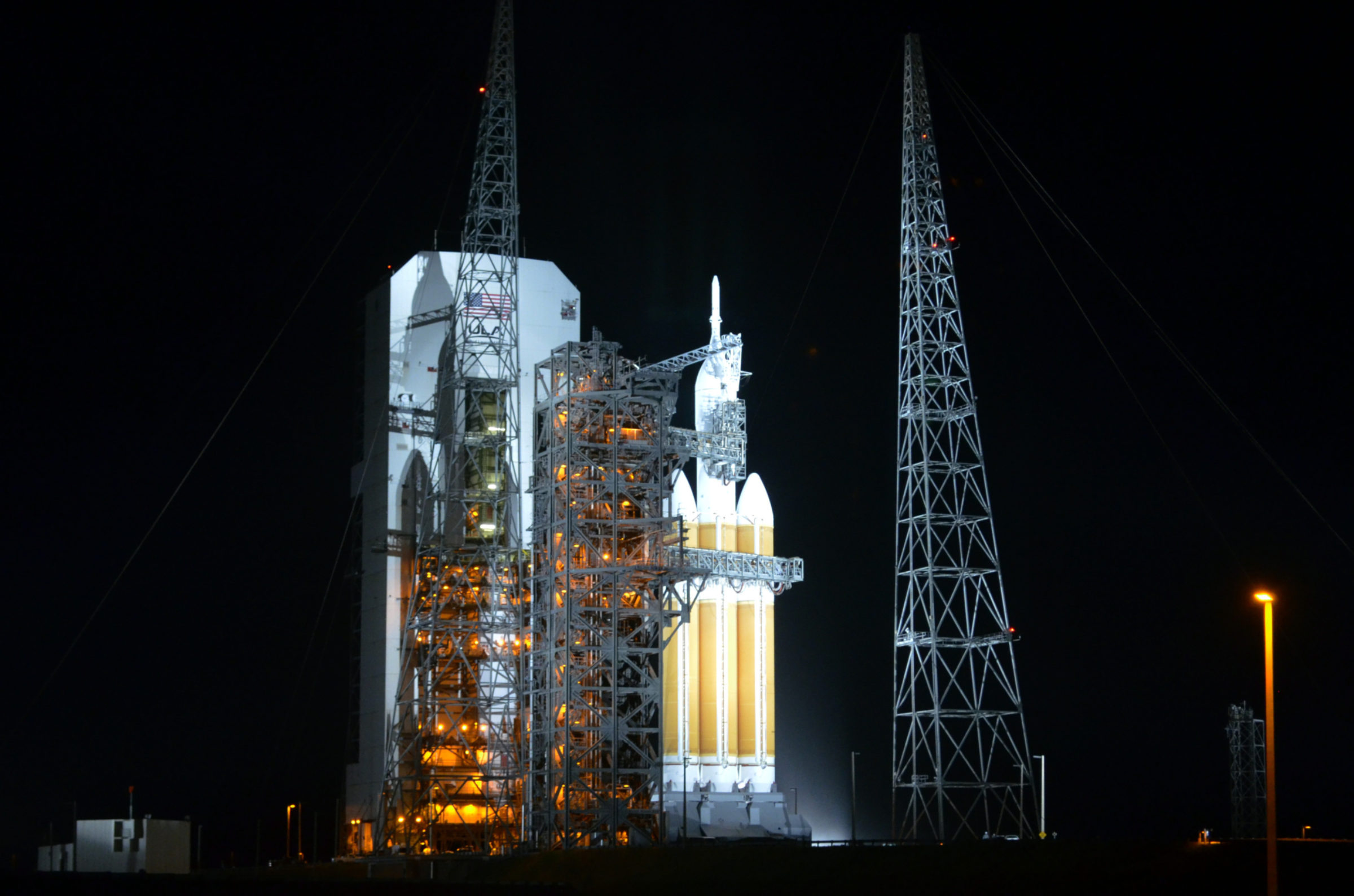Jason Davis • May 15, 2017
The anatomy of a delay: Here's a timeline of twists and turns for NASA's SLS and Orion programs
On Friday, NASA announced it would not fly astronauts during the Space Launch System's maiden mission, ending a short-lived consideration to repeat the space shuttle's bold 1981 test flight. At the same time, agency officials confirmed what we already knew: SLS and Orion will not be ready to fly in 2018 as previously scheduled. The flight will instead occur in 2019, but no firm date has been scheduled. That's a cumulative slip of up to two years since the rocket was unveiled in 2011.
Though the rocket has yet to leave the pad, it's been a wild ride for what will eventually become NASA's first new crew vehicle in almost four decades. Last year, we chronicled the story of SLS and Orion in our Horizon Goal series, and checked in on the programs' development during our 10-day Rocket Road Trip through the Southern U.S. For this latest addition to the story, I compiled a timeline of the major twists and turns SLS and Orion have taken as they attempt to send humans beyond low-Earth orbit for the first time since 1972.

October 11, 2010
President Obama signs the NASA Authorization Act of 2010 into law. The bill directs NASA to create the Space Launch System, an Ares V-like rocket with an initial capability of 70 tons, increasing to 130 tons after future upgrades. An operational date for the core vehicle is requested for December 31, 2016.
September 14, 2011
On Capitol Hill, Florida Congressman Bill Nelson reveals the design of the Space Launch System. "We're about to—the administrator of NASA, Charlie Bolden, is about to—announce the most powerful rocket in history," said Nelson, as Bolden waited for his turn to speak. Bill Gerstenmaier, then the director of NASA's space operations directorate, said a test flight would occur at the end of 2017. Internal and external audits estimated a development cost of $18 billion through that mission, including Orion and ground systems infrastructure.
January 16, 2013
NASA announces the European Space Agency will provide Orion's service module, which provides the capsule with power and propulsion. Later that year, reports surface that the service module is facing mass challenges and other technical problems. But in January 2014, ESA insists the module will be ready for the first flight in 2017.
August 27, 2014
NASA announces SLS has passed its KDP-C milestone, which locks in a baseline launch date of no later than November 2018. The agency says it will continue to work toward a launch date of December 2017.
September 12, 2014
At the Michoud Assembly Facility in New Orleans, Louisiana, the Vertical Assembly Center, which is used to weld SLS fuel tanks, opens for business. But a tower misalignment is soon discovered, prompting repairs and contributing to an internal SLS launch date slip from December 2017 to July 2018.

December 5, 2014
The first Orion spacecraft completes a successful four-and-a-half hour test flight atop a Delta IV Heavy rocket. Around the same time, NASA and ESA officials report continuing challenges with the Orion service module mean the capsule will not be ready in 2017 as previously hoped.
July 16, 2015
A Government Accountability Office report says the Space Launch System is quickly running out of schedule margin to meet its November 2018 launch date.
September 16, 2015
NASA announces Orion has passed KDP-C, which locks in a baseline crewed flight test date of no later than April 2023—a potential slip of two years from previous estimates.
September 2016
The Planetary Society checks in on SLS and Orion progress during our 10-day Rocket Road Trip to NASA centers and contractors across the Southern U.S. We noted that despite an impressive amount of infrastructure upgrades at places like Kennedy Space Center and the Michoud Assembly Facility, the rocket's schedule margin appeared to be razor-thin.
February 7, 2017
A tornado hits the Michoud Assembly Facility, damaging an estimated half of NASA's facilities. SLS hardware is unharmed, but the disruption to operations is significant.
February 15, 2017
NASA announces it is studying adding crew to the first SLS-Orion flight.
April 13, 2017
A NASA Office of Inspector General report warns that SLS, Orion and ground systems are effectively out of cost and schedule margin. The report also reveals NASA and Boeing were forced to change the way the rocket's liquid oxygen tanks are welded together, causing more delays.
April 27, 2017
A GAO report says the first SLS-Orion flight will be delayed, regardless of whether or not a crew is added. In the report, NASA concurs with the finding.
May 12, 2017
During a press call with reporters, NASA says it will not place crew aboard the first SLS-Orion mission, but nevertheless, the first flight has slipped to 2019. No firm launch date has been set.
The Time is Now.
As a Planetary Defender, you’re part of our mission to decrease the risk of Earth being hit by an asteroid or comet.
Donate Today

 Explore Worlds
Explore Worlds Find Life
Find Life Defend Earth
Defend Earth


